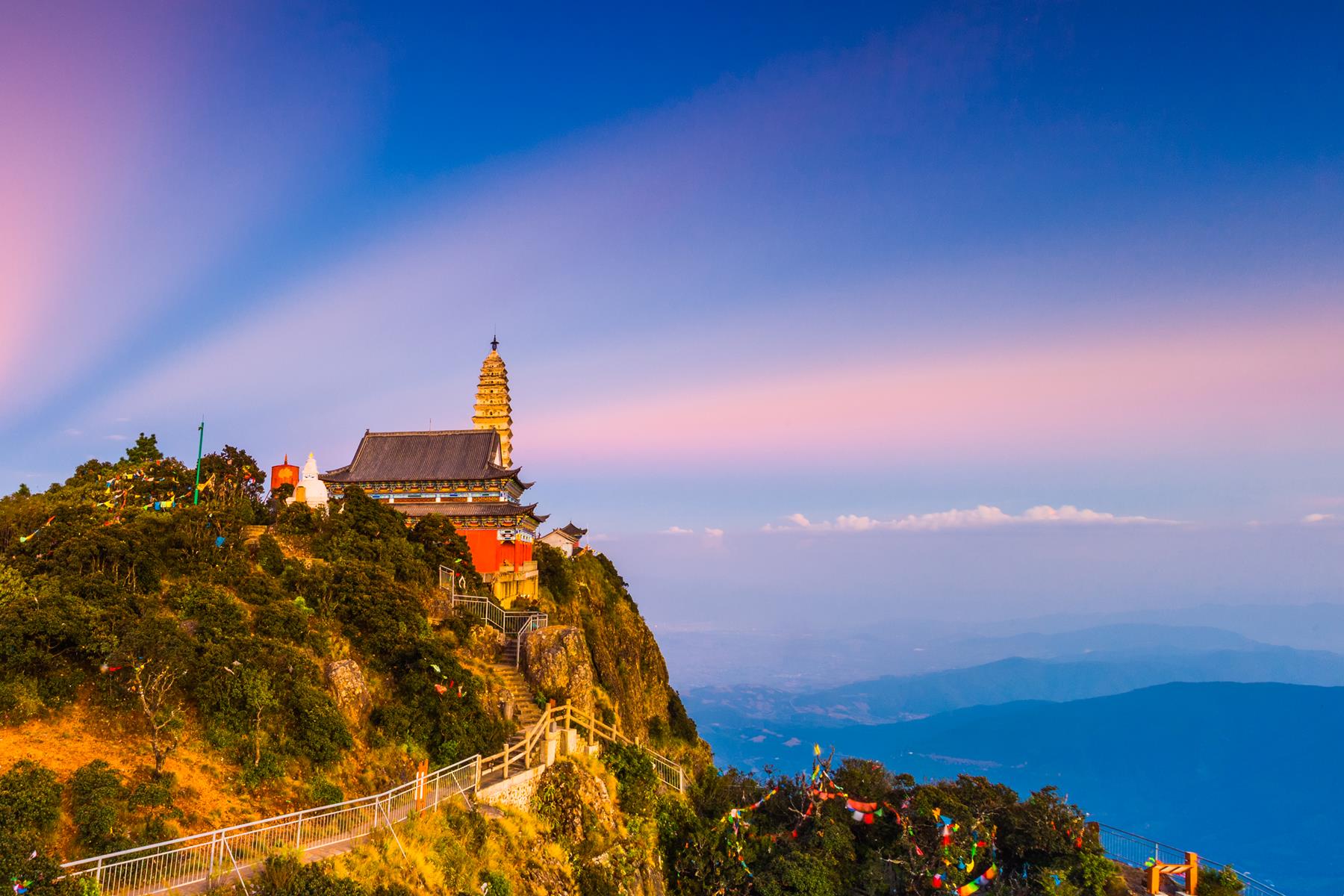
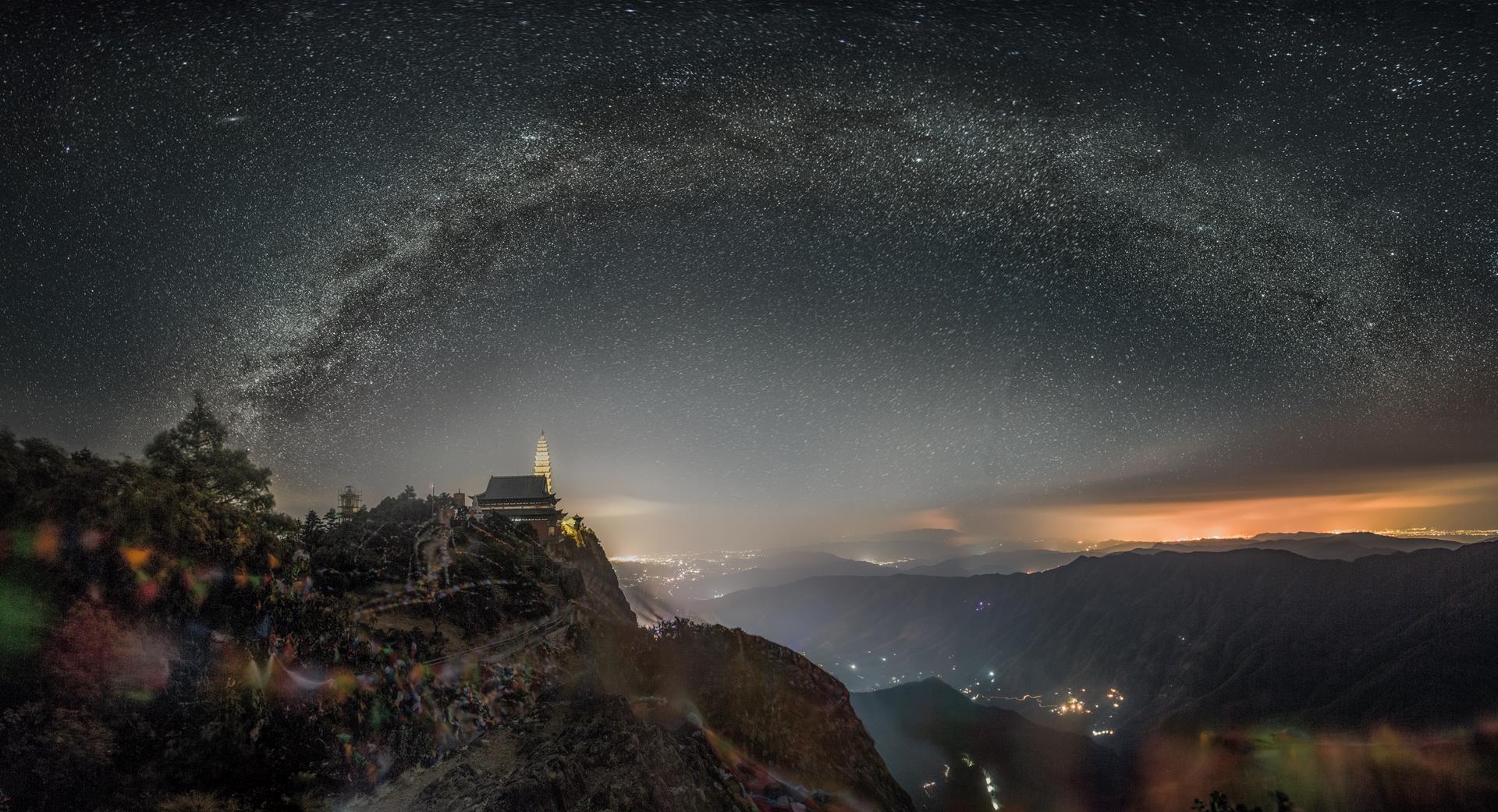
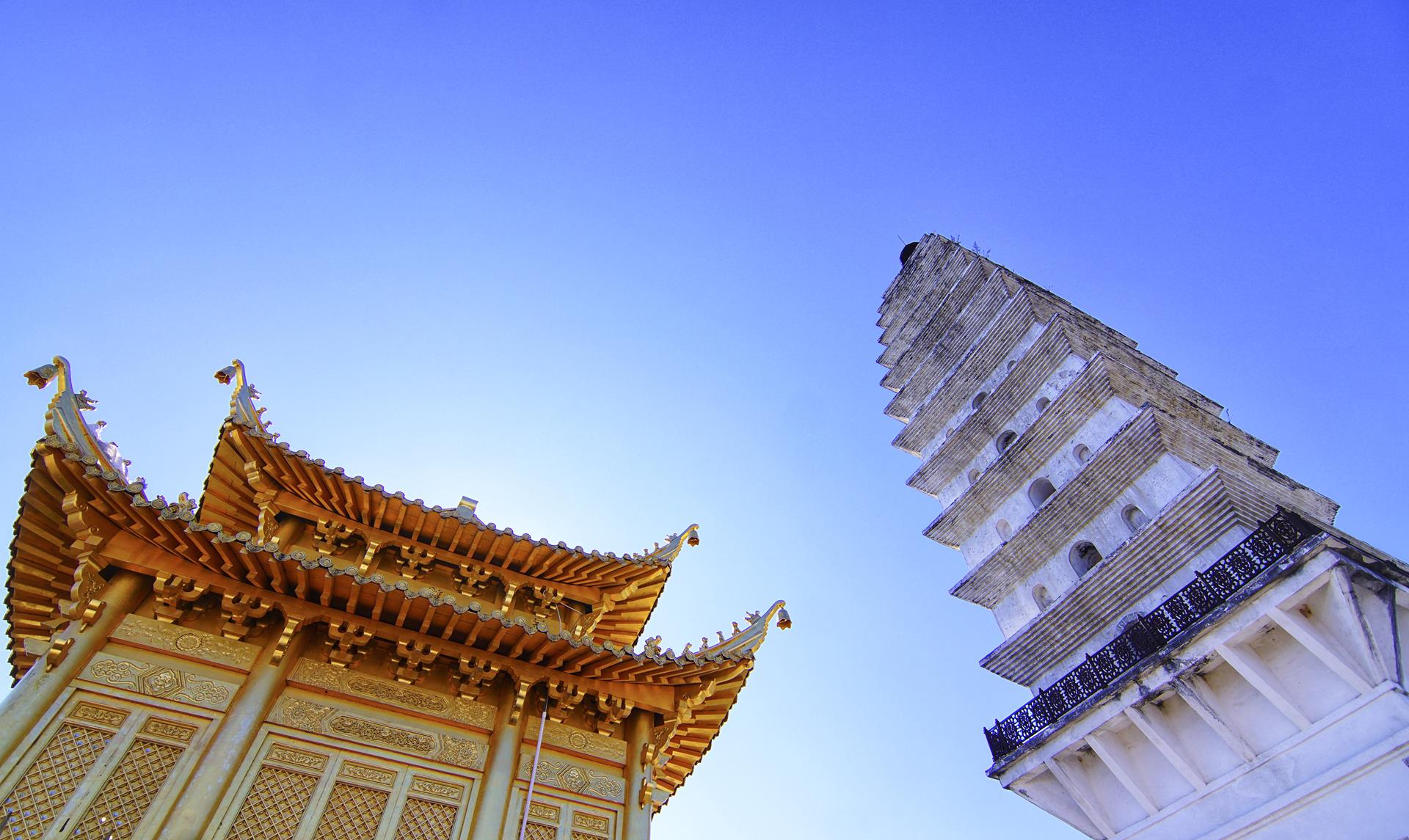
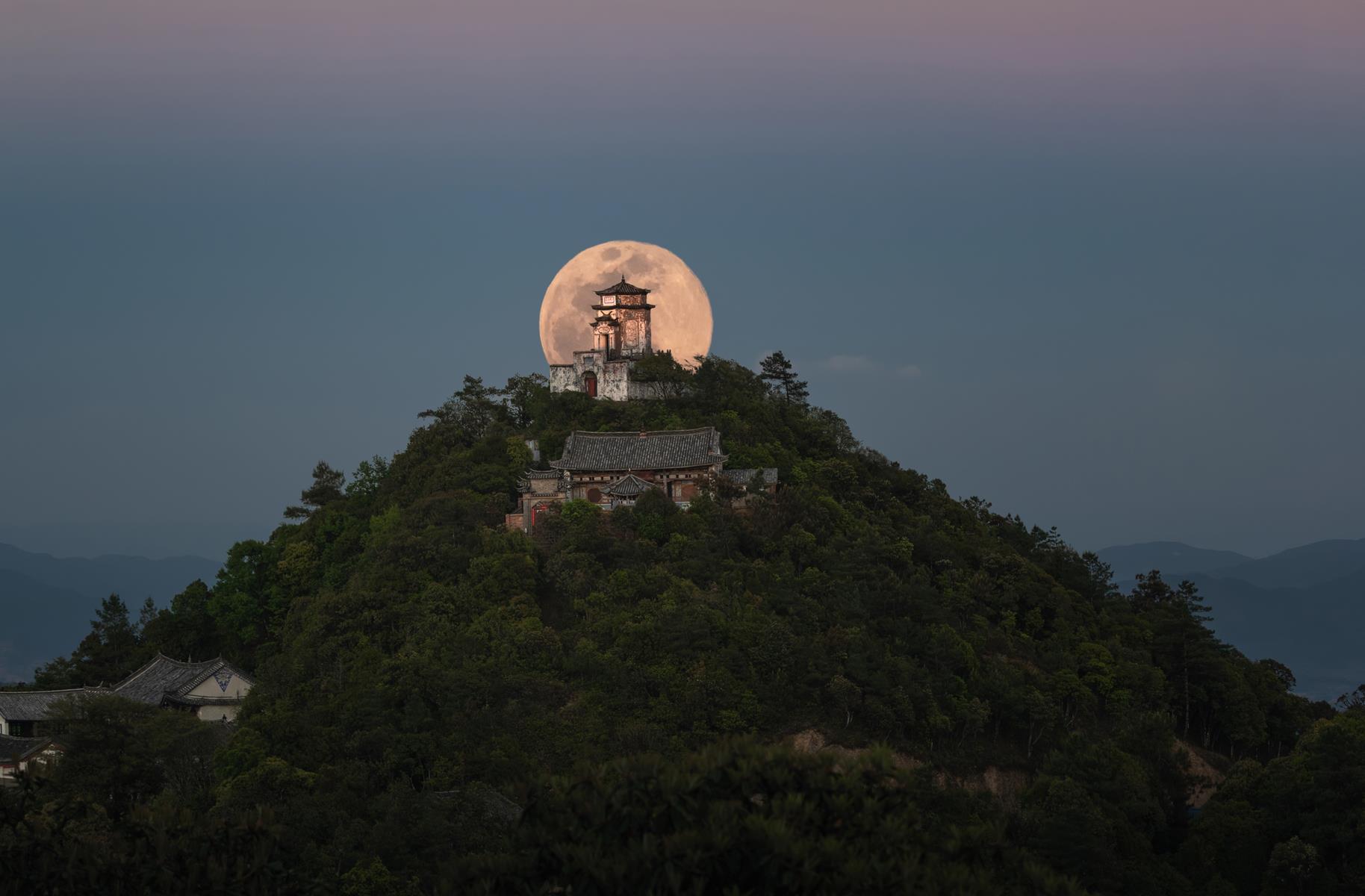
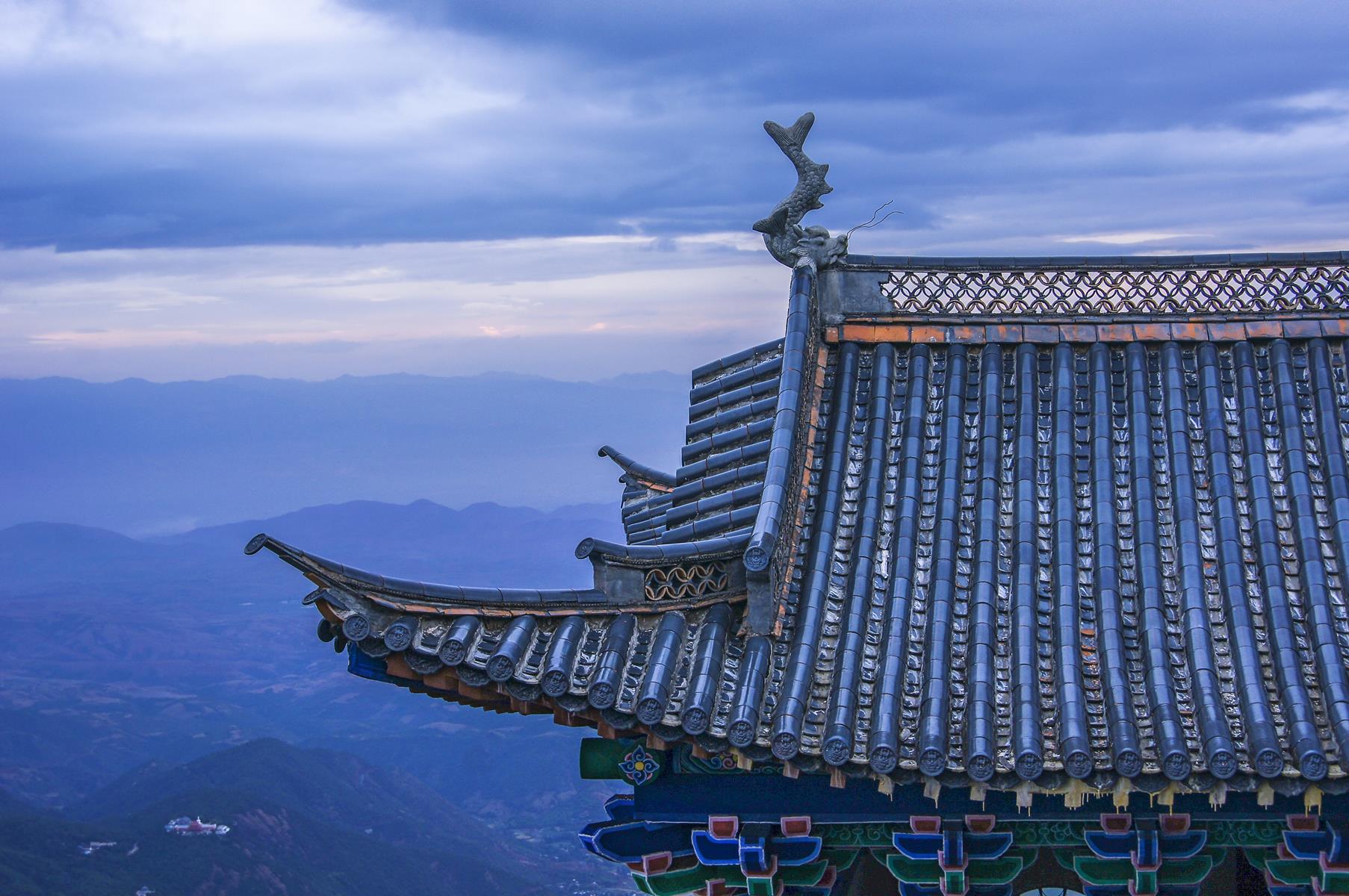
Mount Jizu (Chicken-foot Mountain) is situated in Dali Prefecture, Yunnan Province, China. The mountain is located to the northeast of Erhai and forms the tripoint of three counties: Heqing, Binchuan, and Dali City.
Mount Jizu is a famed holy mountain in Buddhism. Its main peak, Tianzhu Peak, rises some 3,240 metres above sea level. The mountain is vegetated with dense forests and bamboo groves.
From it, visitors can see the sunrise in the east, floating clouds to the south, Cangshan Mountain to the west and Jade Dragon Snow Mountain in the north. They are described as the “four wonders seen from the mountain top.”
With three mountain ranges to the front and one range to the rear, it resembles a chicken’s foot, hence its common name is Mount Cock's Foot or Mt. Cock's Claw. Yet another name for this mountain is Nine Strata Cliffs.
Jizu Mountain's religious story stretches back nearly 1,000 years. Beginning during the Three Kingdoms period, several nunneries were built upon its slopes. But it was not until the time of the Tang Dynasty, four hundred years later, that the first known Buddhist temple was completed.
Throughout the following centuries, the construction of many other shrines and sanctuaries continued. By the late seventeenth century, during the Qing Dynasty, Jizu Mountain's religious importance reach its zenith. At that point, according to official historical accounts, there were 42 temples and monasteries, 65 separate nunneries and more than 5,000 religious devotees residing on the mountain.
Today, however, not much remains of those ancient structures. In the midst of the Cultural Revolution, most were destroyed. At the mountain's summit, only two temples and a gate remain, and these structures needed serious updating following the 1960s and 70s.
The mountain enjoys great prestige in South Asia and Southeast Asia, and shares the same fame with Wutai Mountain, Ermei Mountain, Putuo Mountain and Jiuhua Mountain in China. The mountain is a birthplace for Zen Buddhism.
It is one of China's famous Buddhist and Taoist mountains, and Buddhists come here to worship.
It is a multifunctional tourist attraction based on Buddhist culture and ecological landscapes, combining Buddhist pilgrimage, Buddhist studies, tourism and science expeditions.
Currently, there are three means of reaching the summit. The first, and by far the easiest, is by cable car, which will get you there in five minutes.
The second is the ancient stone stairs, which snake up the mountain face, and take approximately two hours of climbing.
The last, and certainly the most difficult and time-consuming, involves hiking over a ridge and up the back of the mountain. With the latter, you can expect a two or three-day trek, depending on your level of fitness.
The mountain is magnificent, perilous, beautiful and serene, and thus is described as a "Buddhist town on a mountain with a spirit.”
Situated in a valley basin, it is hot and dry all the year round, making it suitable for a visit across all four seasons.
Binchuan County, Dali Bai Autonomous Prefecture, Yunnan Province.
1. Please do not take photos of the Buddha, as a matter of respect.
2. Take some warm clothes, as the top of the mountain can be chilly.











